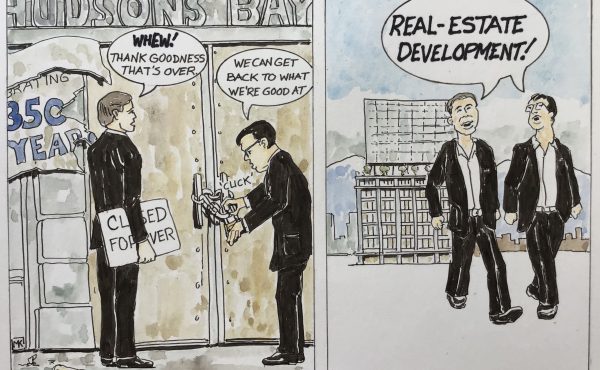
Working in tandem with the first part of The Viaducts: Past, Present and Future series, this photo essay looks at archival images of the original Georgia St. Viaduct.
Images supplied by City of Vancouver Archives and compiled by Isaac A. Vanderhorst
Text by Brian Gould and Erick Villagomez, re:place Magazine
Welcome to the first of a special series of photo essays that will be published alongside The Viaducts: Past Present and Future article series. As explained in the first part of the series, the Georgia St. Viaduct had an interesting life prior to the structures we see today. Springing from the intersection of Main Street at Georgia St. and soaring over the industrial lands to connect the Pacific Terminal Station to the eastern edge of the downtown near Georgia St. and Beatty St, the original viaduct – built in 1915 – was an important gateway for people visiting Vancouver. It was also a significant route between the newly formed suburbs to the east of the downtown peninsula and the city centre – despite ongoing structural problems.
A combination of the viaduct’s structural deficiencies, auto-oriented planning principles, and misguided urban renewal ideals led to the creation of the current Georgia and Dunsmuir Viaducts – completed in 1972 as a fragment of a larger freeway plan that was to carve through a number of Vancouver’s neighbourhoods. In an epic and historically significant battle between the public and municipal officials the highway proposal was ultimately terminated, although several parts of Strathcona – including its well-known Hogan’s Alley – fell victim to the original plan.
The images in this photo-essay were chosen to show the many facets of original viaduct – the celebrations it held and the lives it affected – as well as the civic upheaval leading up to the construction of the current concrete structures.
no images were found
****
The next piece will look at the viaducts in their contemporary context and explore the spatial issues that any development must contend with as the City and locals, alike, ponder the re-development of the north-east corner of False Creek.
***
Watch Part 1 and Part 2 of these short movie for further information on the Vancouver’s urban renewal plans for Strathcona.
To read The Viaducts: Past, Present and Future – Part 1, click here.
To read The Viaducts: Past, Present and Future – Part 2, click here.
To see In Focus: The Georgia and Dunsmuir Viaducts, click here.
To read The Viaducts: Past, Present and Future – Part 3, click here.
To see In Focus: The Georgia and Dunsmuir Viaducts Re-imagined, click here.
**
Isaac Vanderhorst has worked in the museums field for over decade as an educator and researcher covering everything from BC’s Maritime history to Vancouver’s mid-century modernist architecture. Isaac currently works at the West Vancouver Museum along with serving on the board of Heritage Vancouver. In 2010, he was a recipient of the Community Award from the British Columbia Chapter of the Royal Architecture Institute of Canada.
Brian Gould is a transportation planner, urbanist, advocate, and recent graduate of the Master of City Planning program at UC Berkeley.
Erick Villagomez is one of the founding editors at re:place. He is also an educator, independent researcher and designer with academic and professional interests in the human settlements at all scales. His private practice – Metis Design|Build – is an innovative practice dedicated to a collaborative and ecologically responsible approach to the design and construction of places.


